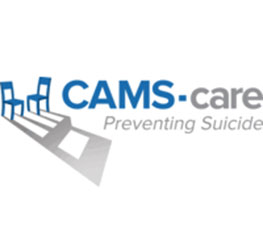The professional home for health service psychologists.
Join a community of 15,000 psychologists and trainees.
Learn it today. Apply it tomorrow.
Connecting you to what you need in your career.
Making a difference.
Drustrup, D. (2021). Talking With white Clients About Race. Journal of Health Service Psychology, 47(2). https://doi.org/10.1007/s42843-021-00037-2
Most white people do not believe that race is an important feature of their lives, and this belief continues into the therapy room where race is rarely a topic of conversation, especially for all-white dyads. However, research shows that race and racism are highly salient for white people’s mental health, and this gap in understanding has negative effects on the well-being of both white people and people of color. This paper argues to embrace the ethical and moral call to actively address race and racism in therapy between white therapists and white clients. This embrace can be particularly challenging for white therapists who believe themselves to be social justice-oriented people, but who nevertheless contribute to racism in both conscious and unconscious ways. A model is offered for how psychotherapists can bring up and work with the topics of race and racism during the course of therapy. The model includes ways for white therapists to engage in the long-term process of self-critique, ways to introduce the salience of race in the white client’s life, and how to connect race and racism to the client’s explicit goals for therapy. Finally, a case example is explored using a well-meaning, self-defined liberal white client.
Ali, S., Flojo, J., Chronister, K., Hayashino, D., Smiling, Q., Torres, D., & McWhirter, E. (2005). When racism is reversed: Therapists of color speak about their experiences with racism from clients, supervisees, and supervisors. In M. Rastogi, & E. Wieling (Eds.), Voices of color: First-person accounts of ethnic minority therapists (pp. 117-134). SAGE Publications, Inc.
American Psychological Association. (2017). Ethical principles of psychologists and code of conduct. Retrieved from http://www.apa.org/ethics/code/index.aspx
Baldwin, J. (1972). No name in the street. Dial Press.
Bartoli, E. & Pyati, A. (2009). Addressing clients’ racism and racial prejudice in individual psychotherapy: Therapeutic considerations. Psychotherapy: Theory, Research, Practice, Training, 46(2), 145–157. doi:10.1037/a0016023
Blair, I., Dasgupta, B., & Glaser, J. (2015). Implicit attitudes. In M. Mikulincer & P. R. Shaver (Eds.), APA handbook of personality and social psychology: Vol. 1. Attitudes and social cognition (pp. 665–691). Washington, DC: American Psychological Association.
Bonilla-Silva, E. (2018). Racism without racists: Color-blind racism and the persistence of racial inequality in the United States (5th ed.). Rowman & Littlefield Publishers.
Brown, L. S. (1991). Antiracism as an ethical imperative: An example from feminist therapy. Ethics & Behavior, 1(2), 113–127. doi:10.1207/s15327019eb0102_4
Cornelius-White, J., Motschnig-Pitrik, R., & Lux, M. (2014). Interdisciplinary applications of the person-centered approach. Springer New York.
DiAngelo, R. (2012). What does it mean to be white? Developing white racial literacy. Peter Lang Publishing, Inc.
Drustrup, D. (2019). White therapists addressing racism in psychotherapy: An ethical and clinical model for practice. Ethics & Behavior, 30(3). 181-196. 10.1080/10508422.2019.1588732
Dunbar-Ortiz, R. (2014). An indigenous peoples’ history of the United States. Beacon Press.
Fanon, F. (1967). Black skin, white masks. Grove Press.
Goff, P.A. (2018, January 24). The ‘R’ word [Radio series episode]. In Code Switch. NPR.
Guindon, M., Green, A., & Hanna, F. (2003). Intolerance and psychopathology: Toward a general diagnosis for racism, sexism, and homophobia. The American Journal of Orthopsychiatry, 73(2), 167–176.
Gushue, G., Constantine, M., & Roberts, M. C. (2007). Color-blind racial attitudes and white racial identity attitudes in psychology trainees. Professional Psychology, 38(3), 321–328. doi:10.1037/0735-7028.38.3.321
Helms, J. E. (1993). I also said, “White racial identity influences White researchers.” The Counseling Psychologist, 21(2), 240–243. https://doi.org/10.1177/0011000093212007
Helms, J. E. (2020). Race is a nice thing to have: A guide to being a white person or understanding the white persons in your life (3rd Ed.). Cognella Inc.
Jones, J. M., & Carter, R. T. (1996). Racism and white racial identity: Merging realities. In B. Bowser & R. Hunt (Eds.), Impacts of racism on white Americans (2nd ed., pp. 1-23). Sage.
Kendi, I. X. (2016). Stamped from the beginning: The definitive history of racist ideas in America. Nation Books.
Kendi, I. X. (2019). How to be an antiracist. One World.
King, M. L. (1967). Where do we go from here: Chaos or community? Harper & Row Publishers, Inc.
Knox, S., Burkard, A. W., Johnson, A. J., Suzuki, L. A., & Ponterotto, J. G. (2003). African American and European American therapists’ experiences of addressing race in cross-racial psychotherapy dyads. Journal of Counseling Psychology, 50(4), 466–481. https://doi-org.proxy.lib.uiowa.edu/10.1037/0022-0167.50.4.466
Lee, L. (2005). Taking off the mask: breaking the silence—the art of naming racism in the therapy room. In M. Rastogi, & E. Wieling (Eds.), Voices of color: First-person accounts of ethnic minority therapists (pp. 91-116). SAGE Publications, Inc.
Matias, C. E. (2016). Feeling white: Whiteness, emotionality, and education. Sense Publishers.
Maker, A. H. (2005). Post 9/11: Combating racism in the sanctity of healing—A clinical vignette utilizing a cultural process dialogue. In M. Rastogi & E. Wieling (Eds.), Voices of color: First-person accounts of ethnic minority therapists (pp. 155–167). Sage.
Meyer, O. L., & Zane, N. (2013). The influence of race and ethnicity in clients’ experiences of mental health treatment. Journal of Community Psychology, 41(7), 884–901. https://doi.org/10.1002/jcop.21580
Mills, C. W. (2007). White ignorance. In S. Sullivan & N. Tuana (Eds.), Race and epistemologies of ignorance (pp. 13–38). Albany, NY: SUNY Press.
Pew Research Center. (2019). Race in America 2019. Release date: April 9, 2019. https://www.pewresearch.org/social-trends/2019/04/09/race-in-america-2019/
Ryan, M. K., & Buirski, P. (2001). Prejudice as a function of self-organization. Psychoanalytic Psychology, 18(1), 21–36. doi:10.1037/0736-9735.18.1.21
Shakur, A. (1987). Assata: An autobiography. Lawrence Hill Books.
Smith, L. (2005). Psychotherapy, classism, and the poor: Conspicuous by their absence. American Psychologist, 60(7), 687-696. https://doi.org/10.1037/0003-066X.60.7.687
Solórzano, D. G., & Yosso, T. J. (2016). Critical race methodology: Counter-storytelling as an analytical framework for educational research. In E. Taylor, D. Gillborn, and G. Ladson-Billings (Eds.), Foundations of critical race theory in education (2nd Ed., pp. 127-142). Routledge.
Sommers, S., & Norton, M. (2006). Lay theories about white racists: What constitutes racism (and what doesn’t). Group Processes & Intergroup Relations, 9(1), 117-138. https://doi.org/10.1177/1368430206059881
Spade, D. (2020). Mutual aid: Building solidarity during this crisis (and the next). Verso.
Spalding, B, Grove, J, Rolfe, A. (2019). An exploration of Black, Asian and Minority Ethnic counsellors’ experiences of working with White clients. Counseling and Psychotherapy Research. 19(1): 75– 82. https://doi-org.proxy.lib.uiowa.edu/10.1002/capr.12194
Spanierman, L. B., & Heppner, M. J. (2004). Psychosocial costs of racism to Whites scale (PCRW): Construction and initial validation. Journal of Counseling Psychology, 51(2), 249–262. https://doi-org.proxy.lib.uiowa.edu/10.1037/0022-0167.51.2.249
Spanierman, L. B., Poteat, V. P., Wang, Y.-F., & Oh, E. (2008). Psychosocial costs of racism to White counselors: Predicting various dimensions of multicultural counseling competence. Journal of Counseling Psychology, 55(1), 75–88. https://doi-org.proxy.lib.uiowa.edu/10.1037/0022-0167.55.1.75
Spanierman, L. B., Todd, N. R., & Anderson, C. J. (2009). Psychosocial costs of racism to Whites: Understanding patterns among university students. Journal of Counseling Psychology, 56(2), 239–252. https://doi.org/10.1037/a0015432
Stone, M. R., (2013). “Somebody better put their pants on and be talking about it”: White therapists who identify as anti-racist addressing racism and racial identity with White clients. Theses, Dissertations, and Projects. 605. Retrieved from https://scholarworks.smith.edu/theses/605
Sue, D. W. (2015). Race talk and the conspiracy of silence: Understanding and facilitating difficult dialogues on race. John Wiley & Sons Inc.
Sue, D. W., Sue, D. (2016). Counseling the culturally diverse: theory and practice, 7th edition. John Wiley & Sons, Inc. Hoboken.
Taylor, E., Gillborn, D., & Ladson-Billings, G. (2016). Foundations of critical race theory in education. Routledge.
Thompson, C. (1997). Facilitating racial identity development in the professional context. In C. Thompson & R. Carter (Eds.), Racial identity theory: Applications to individual, group, and organizational interventions (pp. 33–48). Lawrence Erlbaum.
Thompson, C., & Neville, H. (1999). Racism, mental health, and mental health practice. The Counseling Psychologist, 27(2), 155–223. doi:10.1177/0011000099272001
Trawalter, C., & Richeson, J. (2008). Let’s talk about race, baby! When Whites’ and Blacks’ interracial contact experiences diverge. Journal of Experimental Social Psychology, 44, 1214-1217.
Warikoo N., Sinclair, S., Fei, J., & Jacoby-Senghor, D. (2016). Examining racial bias in education: A new approach. Educational Researcher, 45(9), 508–514. https://doi.org/10.3102/0013189X16683408
Copyright © 2025 All rights reserved. National Register of Health Service Psychologists









